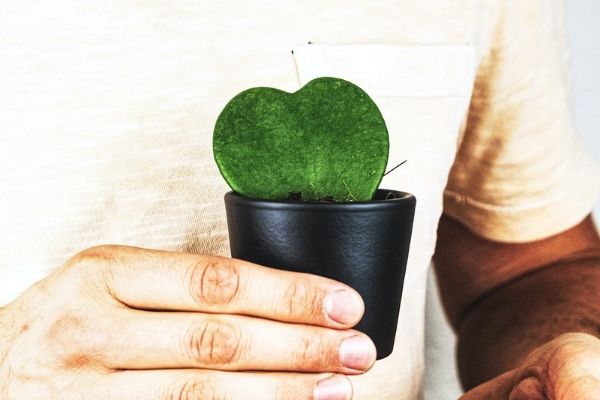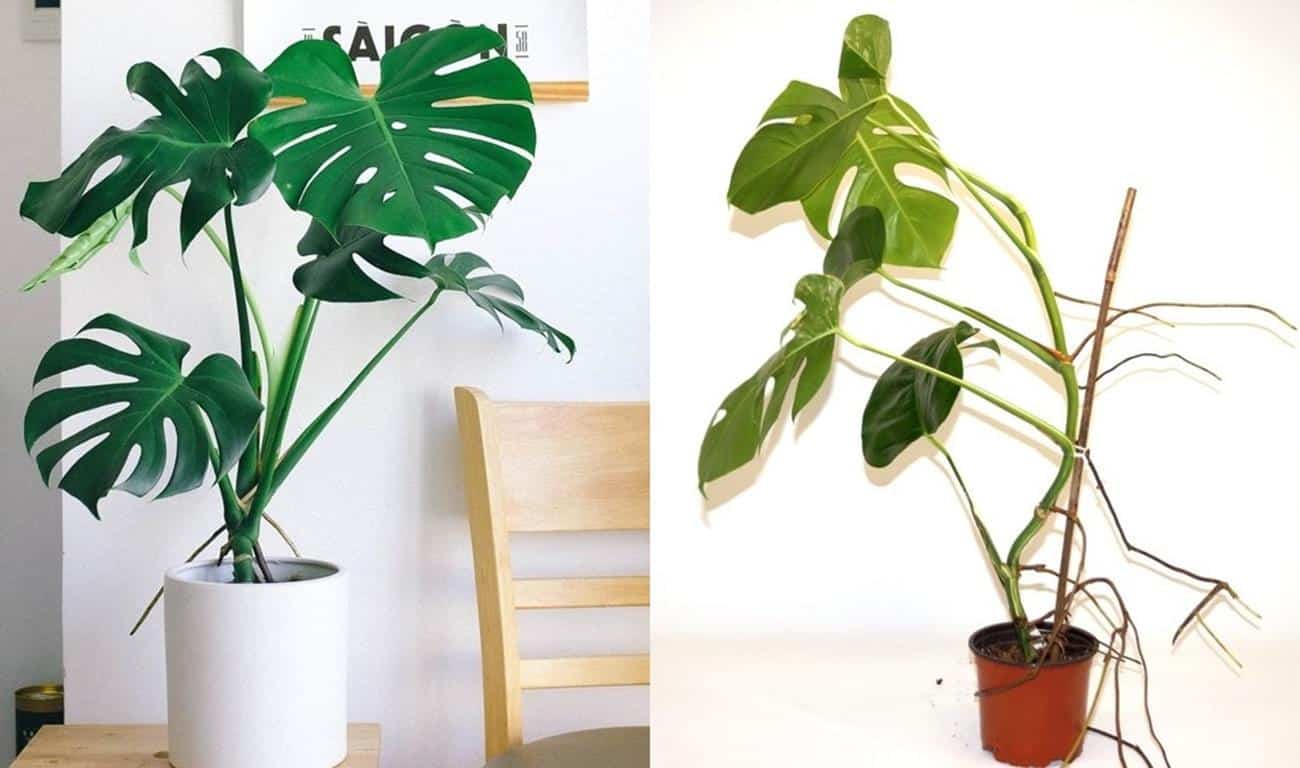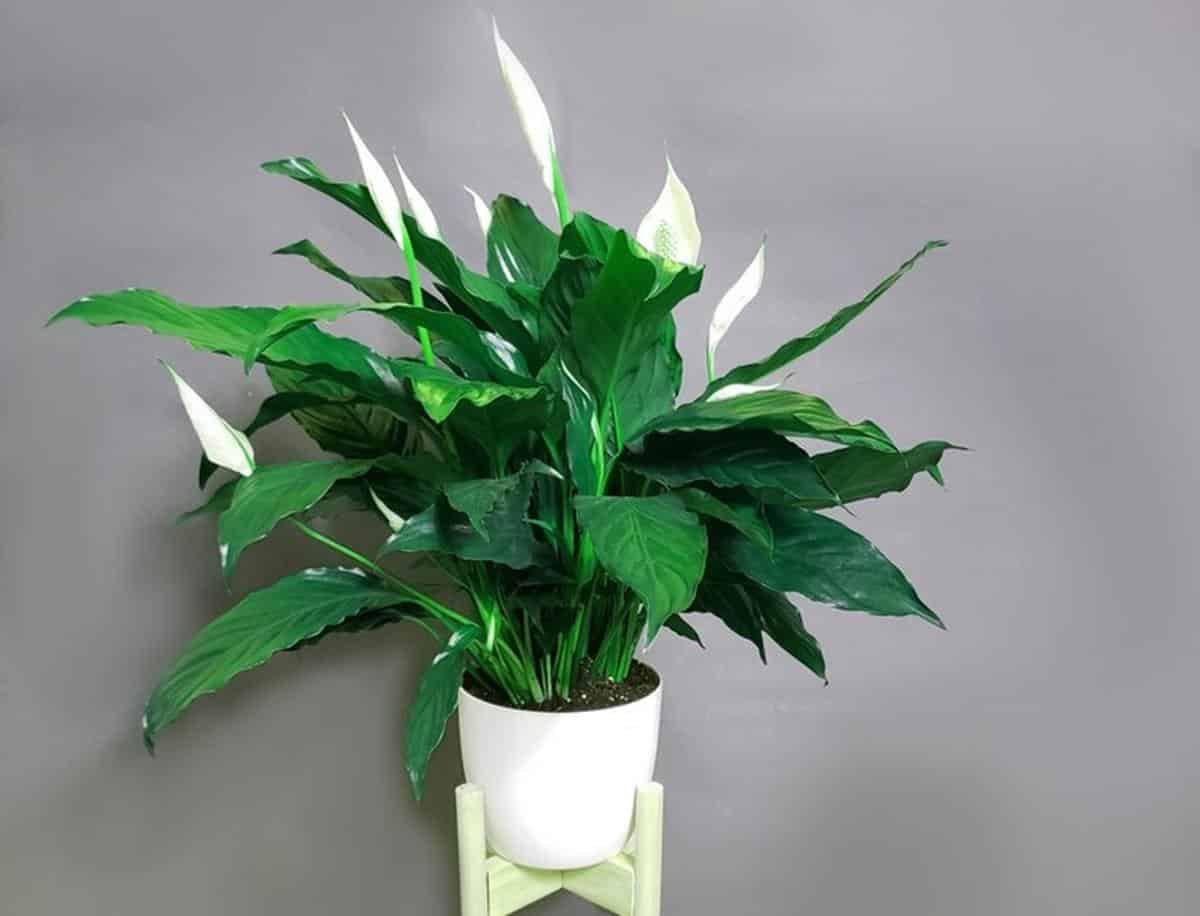Hoya plants are often referred to as "Wax Plants". They are special plants that come in different sizes and shapes.
In this article, I will go over 10 different topics about Hoya plants, with topics about how to make a hoya bushier, cold hardiness, toxicity, and more.
With these pro-tips, you will learn all the best kept secrets about Hoya plants to keep your Hoyas happy and healthy!

Contents
- 1. How do you make Hoya bushier?
- 2. Do Hoyas like coffee grounds?
- 3. Why are my Hoya leaves soft?
- 4. Why is my Hoya wrinkly?
- 5. How do you clean Hoya leaves?
- 6. Will Hoya leaves grow back?
- 7. Why are Hoya plants so popular?
- 8. Are Hoyas cold hardy?
- 9. Are hoyas toxic to rabbits or birds?
- 10. Mold on Hoya soil (and how to get rid of it)
- Final thoughts
1. How do you make Hoya bushier?
I think most of us can agree that Hoya plants look better when they are full and bushy.
You can make your Hoya plant bushier by fertilizing the soil once a month from spring to fall. This will boost the foliage growth and make the plant look bushier and fuller. By cutting off long stems, the plant will also appear fuller.
If you want to trim the long stems, you will create opportunities for propagation. If you have cut away a healthy stem with at least 2 leaves and one node, you can propagate it in water or directly in the soil.
2. Do Hoyas like coffee grounds?
Coffee grounds are known to work great as a natural fertilizer for your plants. They contain essential minerals for plants like nitrogen, calcium, potassium, and magnesium. However, there is a debate going on whether Hoyas like coffee grounds are not.
While there isn't any real evidence to suggest that adding coffee grounds to Hoya plants can be harmful to the plant, I highly recommend that you proceed with caution. Coffee grounds can increase fungal growth because the organic substance is a natural breeding ground for fungi. Also, some Hoya plants might not like the acidic pH of the coffee grounds.
Many people claim that their Hoya plants love coffee grounds, while others will tell you that the caffeine is bad and that it will kill the plants.
However, if you want to experiment with this natural fertilizer, I would recommend starting with only a little bit of it. Mix it in thoroughly in the soil of your plant and monitor the plant over the next weeks.
If the leaves of the plant are turning yellow and start to wilt after mixing in the coffee grounds, you want to consider repotting the plant into normal hoya soil.
3. Why are my Hoya leaves soft?
Depending on what type of Hoya you have, the leaves can be quite thick and hold a lot of water. Plants need water to thrive and to keep the leaves and stems from drooping. However, inconsequent watering can lead to some problems, including soft leaves.
When Hoyas have too little water, leaves turn brown and wilt. On the other hand, giving your Hoyas too much water will result in soft and limp leaves. You can fix this problem by keeping a tight watering schedule and only water the plant again when the top layer of the soil is dry.
If the leaves stay soft after decreasing the amount of water, you want to make sure that you are using the right type of soil.
Hoyas need well-draining soil and like their roots to dry out. If the soil mix is too heavy and retains too much moisture, the plant will suffer and soften its leaves. Transplanting the Hoya into damp sphagnum moss or another well-draining soil mix will do wonders in this instance.
4. Why is my Hoya wrinkly?
The Hindu rope Hoya (also known as the Hoya carnosa 'Compacta' or 'Krinkle Kurl') is a curly leaf Hoya plant. In the paragraph above, we found out that giving your Hoya plant too much water will turn the leaves soft. But, why are your Hoya leaves wrinkly?
Hoyas retain their own water supply. You will notice that after you water your Hoya the leaves become very plump. Over time the leaves will start to wrinkle as the plant decreases in its water retention. This wrinkling is the physical sign that your Hoya is ready to be watered.
Your Hoya leaves are wrinkled because they are dehydrated. That could be because the soil or the air is too dry. Here are two things you can do to stop your Hoya leaves from wrinkling.
- Keep humidity around the plant at least 30%
- Water the plant if the top 2 inches of the soil is dry
5. How do you clean Hoya leaves?
What is more beautiful than a Hoya plant? A Hoya plant that has clean and shiny leaves! Cleaning the leaves of your Hoya is very important because a clean plant will have its photosynthesizing at optimal levels which will result in a healthier plant and healthy plants are less likely to get infected with a pest or disease.
So How do you clean Hoya leaves? There are three easy ways you can do this: you can either dip a soft cloth in a soap/water solution and carefully wipe the leaves, you can also take the plant outdoors and hose it down, or you can shower the plant. Be sure to clean both the top and bottom of the leaves, because this will help to remove pests like spider mites.
Before cleaning your Hoya plant, just make sure the water that you're using isn't too hot or cold!
Tip: if you have showered your Hoya plant, leave it in the bathroom for a couple of days (only if there is enough light of course). The plant will love the high humidity!
6. Will Hoya leaves grow back?
The number one cause why Hoya plants will lose their leaves is by either under or overwatering. By applying a watering schedule and only water when the top inch of the soil is dry, you can avoid this problem.
For whatever reason the plant has lost a leave, the big question now is: will the Hoya leaves grow back?
Ripped or split Hoya leaves will never heal. However, your plant can grow new leaves to replace the leaves that have fallen off or are damaged. New leaves will grow from an area on the stem or branch called a node.
To increase the growth rate of the Hoya and promote new leaf growth, you can feed the plant with fertilizer once a month (only during spring and summer).
Another way to promote leaf growth is by making sure you care for the plant in the right way. Generally, these plants love bright indirect sunlight and only need to be watered when the top inch (2.5 cm) of the soil is dry.
7. Why are Hoya plants so popular?
Over the last years, Hoya plants have been getting more and more popular. But why is this?
Two of the main reasons for the Hoya's massive popularity are the shape of its leaves and colorful flowers. Other reasons might be that they are relatively hard to kill and are pet-friendly. They are also fast-growing plants that do great in almost any indoor environment.
8. Are Hoyas cold hardy?
Hoyas are generally strong plants that can thrive in a wide variety of temperatures. They can be grown indoors as well as outdoors (in most climates).
While there are certain Hoya species that are cold hardy down to 32°F (0°C), other Hoya species are only cold hardy down to 40°F (4.4°C). Generally speaking, the ideal temperature for Hoyas is between 60-85°F (15-29°C) and most of them are cold hardy down to 40 degrees Fahrenheit.
If you are not sure if your Hoya can handle the cold weather and you want to protect it against the cold temperatures you can do a couple of things:
- Cover the Hoya with bed sheets, blankets, or a plastic sheet (Use stakes to keep material from touching the plant)
- Take the plant indoors
- Put a plastic bucket over the top of the plant
- Cover the plant with a fleecy frost blanket (click here to purchase frost blanket from Etsy)
9. Are hoyas toxic to rabbits or birds?
Unfortunately, pets are not able to identify the toxicity of plants themselves. If you have Hoya plants at home AND you have pets like rabbits or birds, you don't have to worry!
Although Hoya plants are not toxic to rabbits or birds, they could still make the animal sick. Their digestive systems are unable to break down the leaf of the hoya plant, so eating a large amount of the leaves could cause the rabbit or bird to throw up.
However, if your pet is behaving strangely (throwing up, weird movement, etc.) after eating parts of the plant, you want to contact the vets.
10. Mold on Hoya soil (and how to get rid of it)
If you have found out that there is mold (fungus) on the top of your Hoya soil, don't panic! This white mold is typically a saprophytic fungus and is actually not dangerous to humans or your plants.
There are a couple of things you can do to remove this mold. But first, let's find out why there is mold on the soil of your Hoya.
Cause: The white mold on the top of the Hoya soil is caused if the condition of the soil is damp and ventilation is limited. If the soil stays damp for too long, mold can appear. These fungal spores are so small and light, and can also infect other plants nearby by spreading through the air or water.
Solution: You can get rid of the mold by scraping off the infected top layer of the soil and cutting down on the watering. Let the top 1 inch of the soil of your Hoya plant dry out before watering again. The mold should not return. Also, many people claim that sprinkling the soil with ground cinnamon can also help the mold to stay away. But this is only based on anecdotal evidence.
Keep in mind that if the fungus grows ON the plant's stem and leaves, you are dealing with a completely different kind of fungus. If you do have fungus on other parts of the plant besides the soil, you want to treat it rather sooner than later. To get rid of this particular fungus, you want to use a fungicide.
Final thoughts
Although a lot of people claim that Hoyas are very easy to care for. There are still plenty of tips and tricks that could be very useful if you have a Hoya.
I hope these tips were helpful for you and that you learned something today!
If you did learn something, share this post on social media, that would really help this blog out a lot.
Also if you liked this kind of content, also check out Monstera Plants: 11 Things You Should Know



Leave a Reply